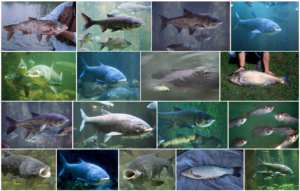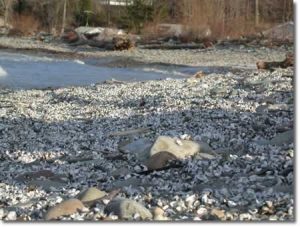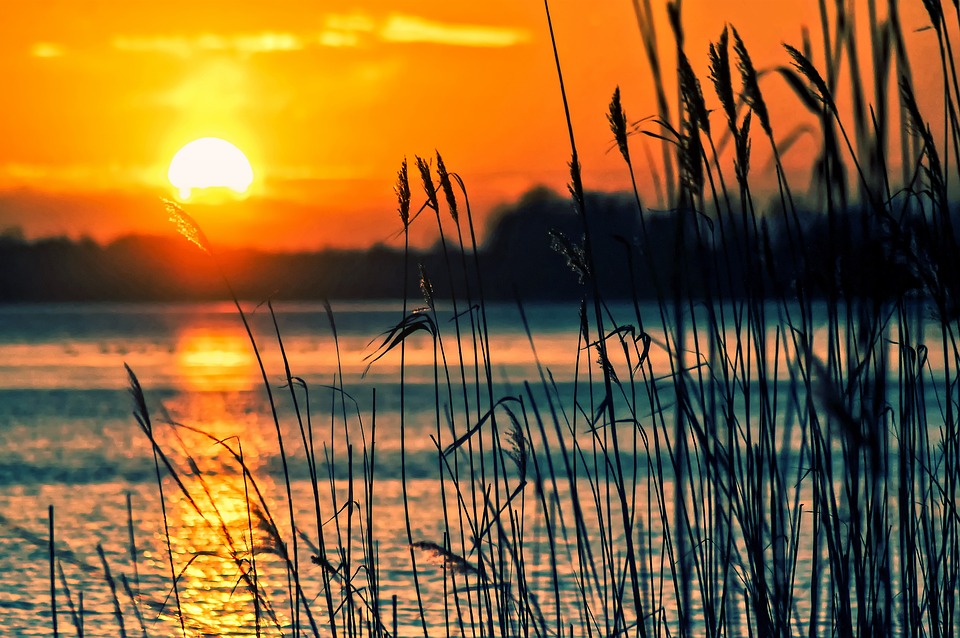INVASIVE SPECIES
- LEF supports the Coast Guard Authorization Act of 2018 that regulates discharge from ships that can lead to invasive species in the Great Lakes.
- LEF supports rebuilding the locks at Brandon Road with technology that will prevent Asian carp from entering the Great Lakes.


Invasive species are seriously impacting the ecosystems of the Great Lakes and particularly Lake Erie. To date over 185 aquatic invasive species have been established in the Great Lakes. Lake Erie has been the most seriously impacted as nearly all of the invasive species are present in it due to the nature of its ecosystems being the shallowest, warmest, and most biologically active. The key factor in the introduction has been ballast water.
The Coast Guard Authorization Act of 2018 has been passed and signed into law with a Vessel Incidental Discharge Act component that establishes a new US EPA $50 Million monitoring program. It increases protections for preventing invasive species introductions, while keeping the shipping industry functional. The economic impact of aquatic invasive species is estimated at $138 million or more per year, which is an extremely conservative estimate. Since the introduction of the zebra and quagga mussels in the late 1980s, the cost to municipal water systems and others is in the billions without consideration to the impact on plankton that is the base of the food chain.
2023 UPDATE
VIDA (Vessel Incidental Discharge Act 2018) United States Environmental Protection Agency is currently undertaking Rule Making hearing for “Vessel Incidental Discharge National Standard of Performance”, which includes virtual public meetings
VIDA has shared governmental agency responsibilities with US EPA being in charge of “rule making for regulatory aspect” and the US Coast Guard handling the enforcement.
There are significant concerns over the potential introduction of additional invasive species due to gaps in testing, emergency response treatment, and exclusion of “Lakers” (ships that operate only in the Great Lakes” from testing and treatment.
Supplemental Notice will include:
• Analysis of newly acquired ballast water data
• Additional regulatory options
o Ballast water uptake best management practices and New Lakers
o Hulls and associated niche areas
o Graywater systems
• Regulatory Impact Analysis
Stakeholder Engagement:
• Virtual public meetings
• Submitting comments
Ballast water has been the source of some of a number of problematic invasive species. Currently the number of established invasive species (nonindigenous) as of 2008 was 185 with the current number being very close to 190 with two new species verified in 2016.
The United States – Environmental Protection Agency study, “Predicting Future Introductions of Nonindigenous Species to the Great Lakes 2008” noted that 185 species have been introduced with 13 having significant adverse effects with financial and ecological impacts. It also established that 58 additional species have potential for introduction. It further indicated that 14 of these species have a high likelihood of being able to establish themselves if they are introduced.
SCIENTISTS NEED YOUR HELP HUNTING FOR GREAT LAKES INVADERS
Great Lakes ecosystems have been transformed by invasive species like zebra mussels, quagga mussels, and round gobies. In Deep Lake Explorer, you will learn to identify these species in underwater videos and can see for yourself how invaders transform coastal areas. You can also experience deep, pristine habitats with native fish and other fascinating organisms. These places are nearly impossible to see in person.
- A simple tutorial will teach you how to make observations.
- Your observations will help scientists understand where invasive species are and how they impact the Great Lakes.
- Results will be shared with users and will help inform management and protection of the Great Lakes.
ASIAN CARP
ODNR’s April of 2019 report Lake Erie Grass Carp Response Strategy (2019-2023), describes the Ohio Department of Natural Resources, Division of Wildlife (DOW) strategy to prevent grass carp expansion beyond western Lake Erie, the Maumee and Sandusky rivers. This plan was developed to provide a foundation for on-the-ground efforts to address grass carp reproduction in these rivers and population expansion in Lake Erie.
Asian carp (big head, black, grass, and silver) are on the verge of being established in the Great Lakes. The potential impact of these species could devastate Lake Erie. The primary potential entry point is the Chicago Sanitary and Ship Canal / Illinois River which is currently being blocked by a series of electronic barriers. There have been concerns on the effectiveness of this system. The Brandon Road Locks Project Study has been under review by the United States Army Corps of Engineers for several years. The study has recently been released with an increased cost estimate from $275 million to $777.8 million.
This project will include the rebuilding of the locks at Brandon Rd. with an array of technologies involving a series of electrical barriers, sound barriers, and a bubble wall system to provide maximum protection to prevent their passage.
The potential impact of the silver carp has been well established with their tendency to leap out of the water when startled causing extreme potential harm to recreational boaters. The silver and big head carp have the potential to reduce the base of the food chain already seriously impaired by the quagga and zebra mussels further reducing the plankton population in the ecosystem.
www.nwf.org/Wildlife/Threats-to-Wildlife/Invasive-Species/Asian-Carp.aspx
www2.usgs.gov/faq/taxonomy/term/9789
We invite you to explore the updated Asian carp website, which can now be accessed via phones, tablets, and other mobile devices. With more intuitive navigation and organization, learning about the fight against invasive Asian carp is easier than ever.
PHRAGMITES
Controlling phragmites, the invasive plant we see along the highways and shorelines of Lake Erie, is challenging. The root system of this perennial, aggressive wetland grass is dense and the tall, thick stands snuff out native cattails and reduce habitat for turtles, frogs, birds, and more.
Property owners and managers can control phragmites. According to the Michigan Department of Environmental Quality, by using an integrated pest management approach that includes an initial herbicide treatment followed by mechanical removal (e.g., cutting, mowing) and annual maintenance. For large areas with dense stands of phragmites, prescribed burning used after herbicide treatment can provide additional control and ecological benefits over mechanical removal. Early detection is key to preventing large dense stands and is also more cost efficient. Permits may be required for phragmites treatment.

www.fws.gov/GOMCP/pdfs/phragmitesQA_factsheet.pdf
www.seagrant.sunysb.edu/ais/pdfs/AIS-LErieOnt.pdf
CLEAN YOUR BOAT
From Peter Whiting of Seattle Yachts:
“Boaters play an important part in maintaining their local waterways. It is vital boaters drain all water from their gear and boat before entering or exiting a body of water.”
Read the full article below:
https://www.seattleyachts.com/clean-your-boat-learn-about-invasive-species



